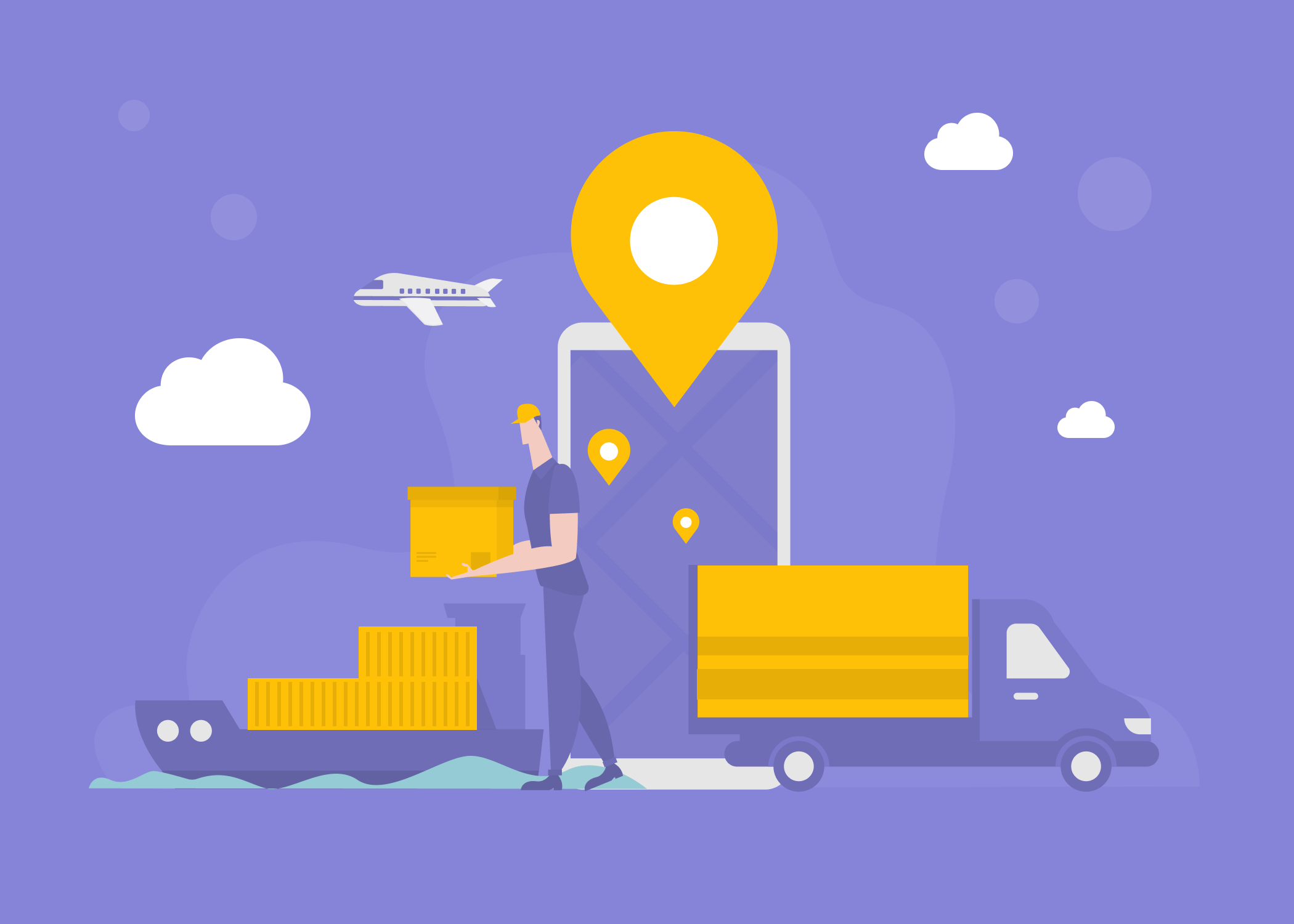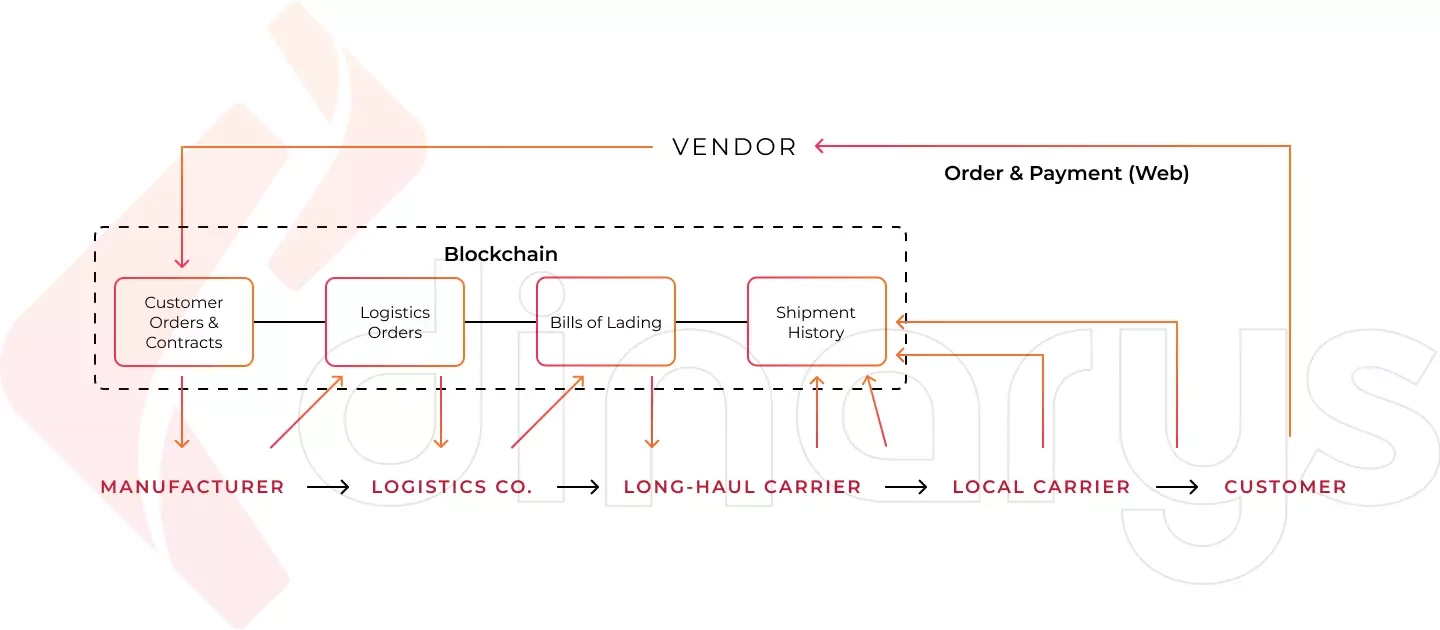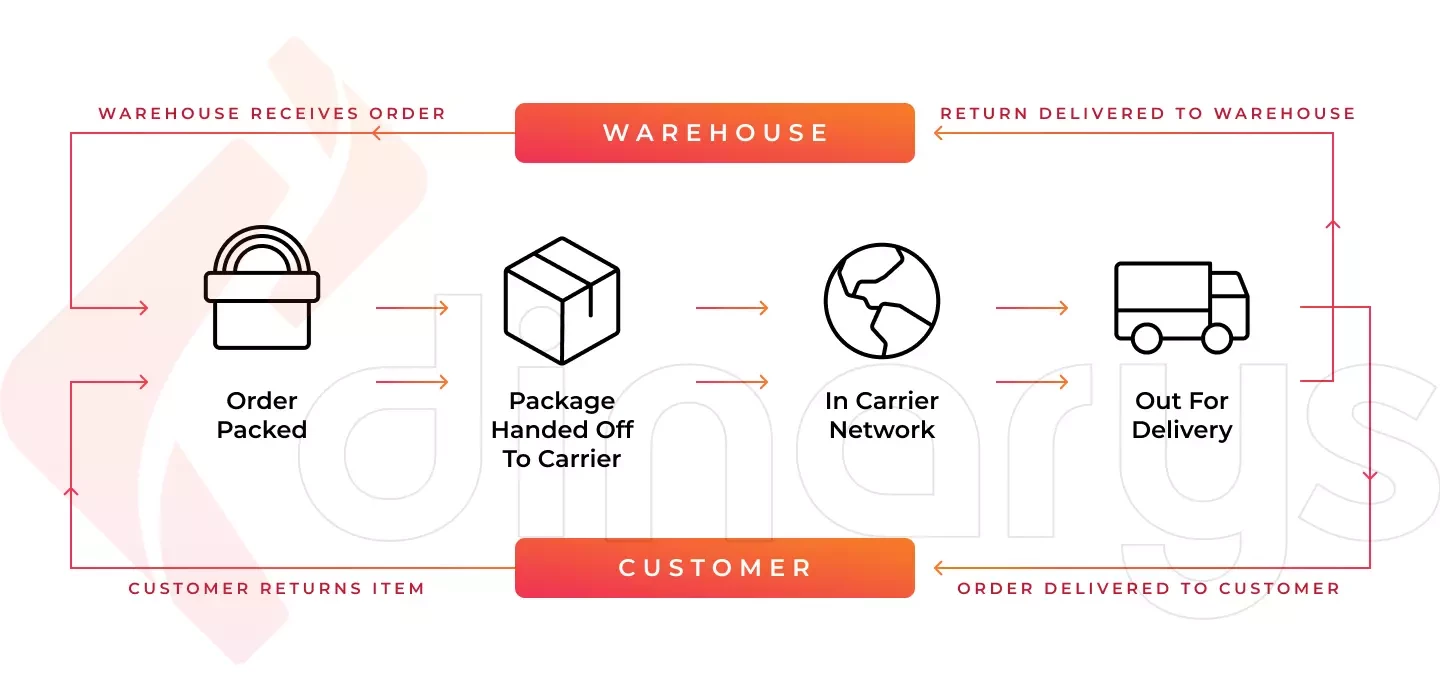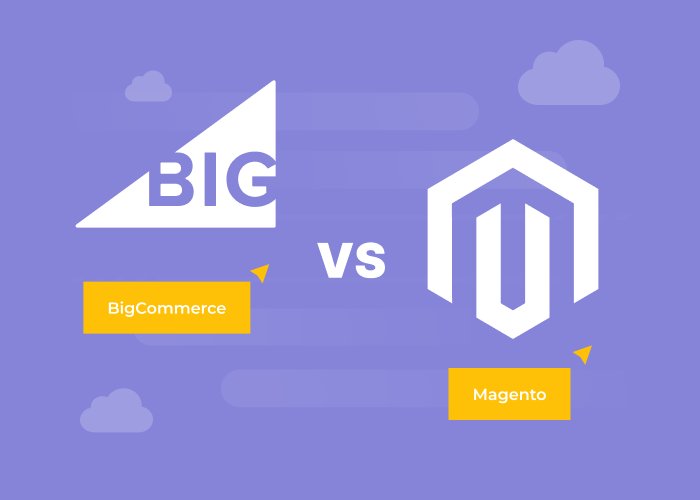Content
A Complete Guide to E-commerce Logistics

Time to read: 15 minutes
The standards for e-commerce differ significantly from the standards for more traditional points of sales. In addition, e-commerce logistics is more complicated than traditional logistics and requires a thoroughly planned approach.
Logistics managers must transform their operations because their roles are critical to e-commerce organizations. Until the customer has received the product, the sale is not complete.
This article is a comprehensive e-commerce logistics guide that answers important questions. What is e-commerce logistics? How do businesses master e-commerce logistics?
What Is E-commerce Logistics?
E-commerce logistics is a complex, multistep process that an e-commerce brand uses to ship an order from the warehouse to the customer. E-commerce logistics includes inventory management and the pricing, packing, and shipping of online orders.
As previously mentioned, e-commerce logistics requires more attention than brick-and-mortar operations for several reasons. First, e-commerce logistics must cover a broader range of stock keeping units and maintain a larger amount of buffer stock on hand. Second, e-commerce logistics requires more space for processing returned products.
In this article, we explain the differences between supply chain operations and logistics.
The difference between e-commerce and traditional logistics
Digital entrepreneurs currently offer a broad range of products and services. From a logistics perspective, the most important difference between physical shopping and online shopping is the need to deliver products not only to warehouses but also to consumers. Let’s take a closer look at the differences between traditional logistics and e-commerce logistics.
- The number of final destinations. Brick-and-mortar businesses primarily distribute products to and from storefronts or wholesalers, but e-commerce businesses send their shipments worldwide to billions of consumers.
- Shipment volume. Hundreds of items may be freight shipped to one location on pallets to brick-and-mortar retailers. On the other hand, e-commerce stores typically use parcel shipping to dispatch orders that contain one or more items.
- In-store pick-up vs. home delivery. The trend is for more established brick-and-mortar companies, such as Target, to use their locations as fulfillment facilities. Retailers may provide customers with additional flexibility by offering in-store or curbside pickup. Undoubtedly, e-commerce logistics is most convenient because it delivers goods directly to customers.
What does e-commerce logistics involve?
E-commerce logistics usually involves the following activities:
- Inventory management. This process entails monitoring and managing your company’s inventory as it is produced or purchased from producers and then stored and delivered. Inventory management coordinates the entire product flow, from purchasing to selling, and ensures that you always have the required number of units at the right location at the right time.
- Warehousing. Warehousing is an essential component of a retail supply chain that involves the storage of goods that will be sold or distributed later. For additional information, read “KPIs to Measure Warehouse Performance and Efficiency.”
- Order packing. This is the process of packing all the products into an appropriate container before delivering them to the final consumer. The packing process occurs in the warehouse and generally involves selecting suitable materials and containers to pack orders, weighing the packages, and labeling them with the correct invoices.
- E-commerce order fulfillment. This part of e-commerce operations delivers orders to end consumers. Depending on your business needs, you can outsource this service to a third-party provider or invest in in-house order fulfillment.
- E-commerce return management. Although e-commerce companies aim to avoid returns, they occur in all sectors of the economy. A customer’s desire to return a purchase triggers the e-commerce return management process, which requires the company to collect, arrange, and replenish the product. If your supply chain is designed effectively, you can drastically reduce losses by replenishing warehouse inventory with undamaged returned goods.
Lets talk about itHave a project in mind?
Five Practical Tips for E-Commerce and Logistics
Delivering quality products on time is essential for business success. Frustrated customers who have trouble receiving their items are unlikely to patronize the retailer again. Even worse, these customers may post unfavorable reviews on social media.
To prevent this situation, we have identified the top five tips for enhancing your logistics management.
Establish strict stock control
There is nothing more upsetting than for a customer to purchase a product and then realize that it is out of stock. This indicates a lack of organization and gives people a bad impression of the store.
It is crucial for merchants to monitor their inventory regularly to avoid these types of situations. In addition, merchants should check the condition of their products.
Another tip is to make a few additional products available to consumers while maintaining the existing quantity of products as much as possible. This may help if merchants have damaged goods that need to be replaced.
Make free and fast shipping a top priority
Offering free delivery motivates customers to complete their purchases. The main motivation for internet shopping is free delivery. In addition, when buyers were asked their reasons for not making an online purchase, 35% of them cited a longer delivery period.
Retailers can control the cost of free delivery. For example, they can require a minimum order value or limit free delivery to certain promotions or products. Thus, retailers need a cost-effective e-commerce logistics solution to offer free shipping.
However, free shipping is no longer sufficient. The concept of “10-business-day delivery” has vanished. Customers anticipate the timely delivery of their orders, and they are disappointed when it is not possible. Interestingly, only 15% of U.S. customers have indicated that they received their orders quickly enough.

Offer multiple shipping options
Expensive delivery is one of the primary causes of shopping cart abandonment for online customers. Most buyers want to benefit from every purchase they make and buy products with great quality and value at an enticing price. If shipping is free, all the better.
E-commerce logistics must offer a variety of shipping choices because every customer has different needs. Some customers are impatient and prefer to pay more for delivery instead of waiting, but others are content to wait if they can get the same great deal.
Search for carriers and choose one that provides the most value for your money. Keep in mind that the process is not complete until the customer receives the product.
Provide shipment tracking
Shipment tracking is one of the features that customers most desire when making online purchases because it allows customers to determine the status of their orders.
Typically, the courier provides a tracking number or code when an order is processed. You and your customer can determine the status and location of the package by visiting the courier’s website and entering the tracking number or code.
To optimize your e-commerce and increase sales and shipment quantities, you should make this tool accessible to your customers and incorporate this portal into your website. In addition, you should consider the open rate of emails that contain this portal. Utilize the tool and add branding components and special offers to boost conversions directly.
Lets talk about itHave a project in mind?
Leverage technology to automate documentation processes (and anything else that can be automated)
It goes without saying that running a successful online store involves significant work and commitment. Fortunately, you can consider several strategies and key areas to help you prepare for heavy loads.
Technology accelerates the entire buying and shipping process, which benefits both buyers and businesses. It saves money and time and contributes to a great shopping experience. Your e-commerce business will achieve better results if you automate all operations. Technology allows you to concentrate on other critical responsibilities because an automated system handles most aspects of logistics (e.g., controlling orders, shipments, and deliveries) for you.
E-commerce Logistics Trends

How should you manage the increasing demands and expectations of digital shoppers? Let’s examine the major trends in e-commerce logistics.
IoT for transparency and quality assurance
The Internet of Things and big data technology are pushing the limits of effective e-commerce logistics.
You should ensure better quality assurance in logistics even before the customer places an order, whether you are shipping goods from manufacturers across the globe to your warehouse, a third-party warehouse, or fulfillment partner or from your manufacturing facility to a third-party fulfillment partner.
By enhancing transparency and enabling real-time visibility of the shipment, you can quickly identify and resolve problems by using real-time location and condition data. Consequently, you increase efficiency and decrease downtime.
Branded shipping experiences
To increase consumer loyalty and brand recall, it is essential to develop a consistent brand identity across all touchpoints. However, many retailers still fall short in providing branded shipping experiences.
Premium packaging is an effective way for e-commerce businesses to brand their shipping experiences because customers may post a photo or a video on social media of the delivery being unboxed. The delivered package creates a first impression, and if the packaging is done well, it can establish brand identity and encourage word-of-mouth marketing.
Therefore, e-commerce retailers are investing in improving their product packaging with branded images, real-time tracking solutions, shipping labels, personalized gift choices, and other features to brand their shipping experiences.
3PL services
As e-commerce sales increase, so will the demand for outsourced third-party logistic (3PL) services. To offer more effective order fulfillment, 3PLs are broadening their range of services by adding distribution facilities in several locations.
More urban micro-warehouses that provide closer access to the customer are projected to appear in 2022. Retailers with several distribution centers will be better equipped to manage their inventory, handle increases in order volume, and provide faster delivery times.

Sustainability
Sustainability in logistics is crucial for businesses. Online businesses gain a substantial competitive edge in the market when they successfully implement sustainability plans. According to a recent McKinsey survey, people now choose brands that actively pursue sustainability initiatives to become greener. In fact, more than 70% of consumers would spend an extra 5% on products that have similar quality if they are created using more environmentally friendly methods.
Businesses can decrease their carbon impact by utilizing vehicles that are more fuel-efficient. In addition, micro-warehousing helps to reduce carbon emissions and speeds up delivery time. Customers today expect packaging that is recyclable, effective, and cost-effective for delivery.
Blockchain potential
Blockchain technology provides a mechanism for organizing data in logistics operations and avoiding intermediaries. Supply chains can be verified and documented automatically, without the need for third parties, by using blockchain technology to reduce the complexity of the supply chain. This logistics technology makes it easier for businesses to improve the efficiency, transparency, and traceability of their supply chain processes.

As you know, conventional logistics techniques are outdated. However, blockchain logistics technology is now a reliable delivery system that aids manufacturers and customers in understanding one another’s demands.
Blockchain is considered a superior technology for transferring products across international borders and documenting changes in the custody of these products because shippers can quickly access information without tampering with it by using the blockchain, which is a digital ledger that stores data in the cloud. A blockchain is a good option for managing logistics because it provides cold chain data traceability and delivery evidence, among other things.
Machine learning and artificial intelligence
By using machine learning algorithms, the logistics sector has made great strides in identifying patterns in delivery performance. Machine learning can lower total freight costs and risks to suppliers. The primary advantage of machine learning is that it allows supply chain participants to collaborate more frequently.
Artificial intelligence (AI) is utilized in logistics to quickly compute data related to various aspects of shipping operations. AI can be used to streamline returns, non-delivery report management, and delayed delivery management. AI also supports ongoing updates and upgrades for various software and systems.
Final Thoughts
A truly effective fulfillment strategy does not appear out of thin air. Consider your company’s requirements and begin to streamline your supply chain gradually. You will succeed if you partner with the right group and focus on exceeding customer expectations.
Choose our e-commerce consulting services to make every step of your logistics process as efficient as possible.
Let professionals meet your challenge
Our certified specialists will find the most optimal solution for your business.




